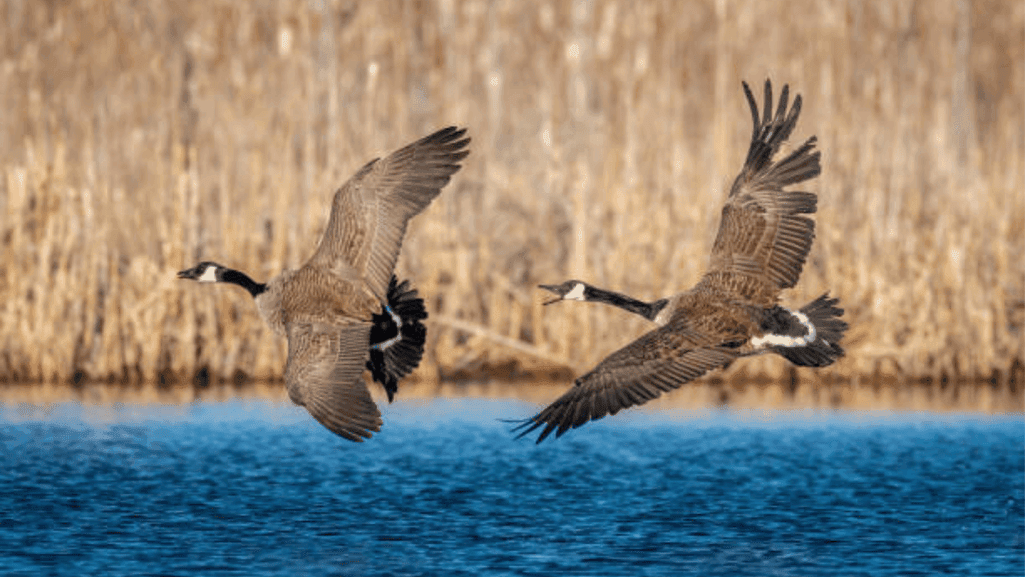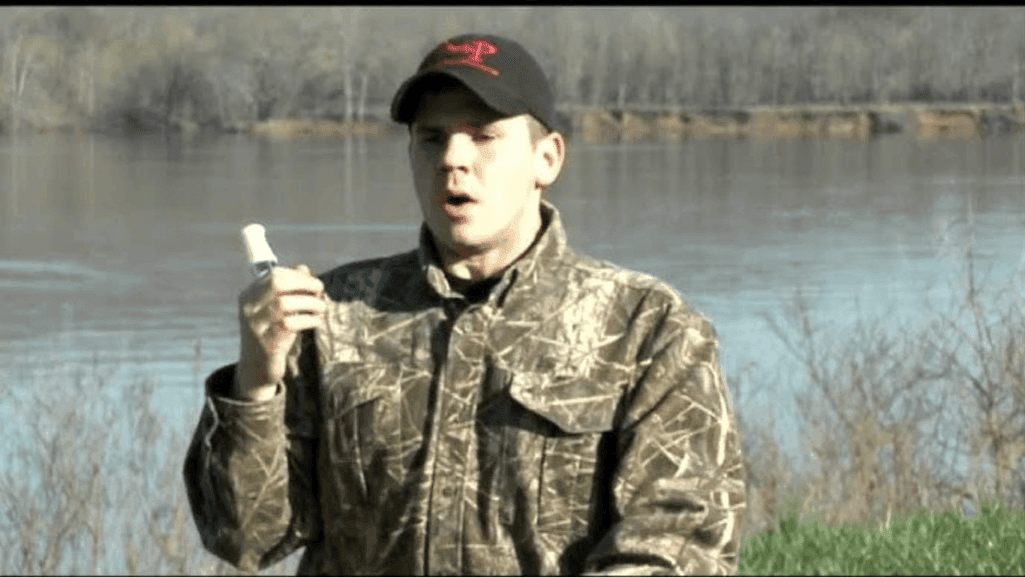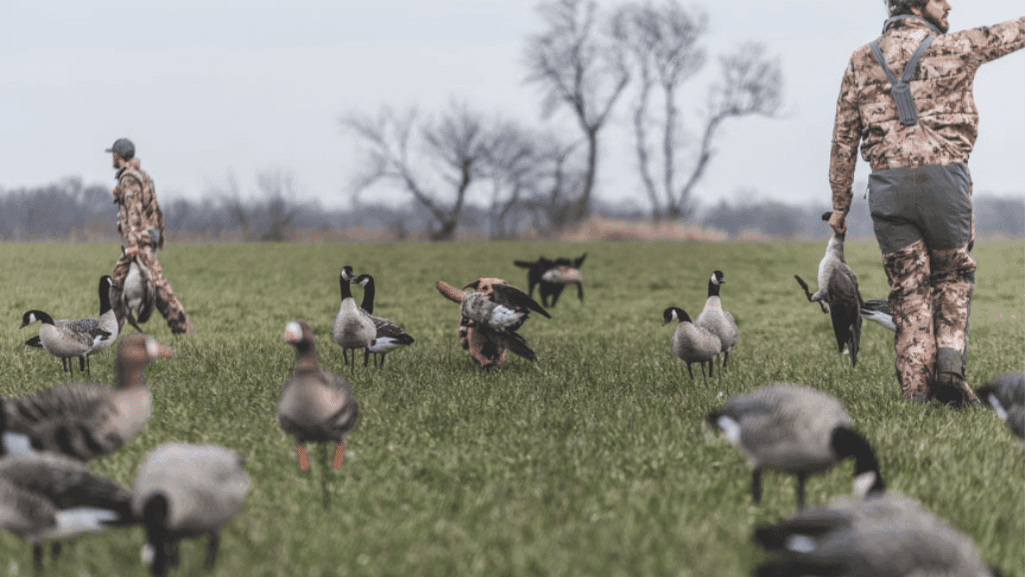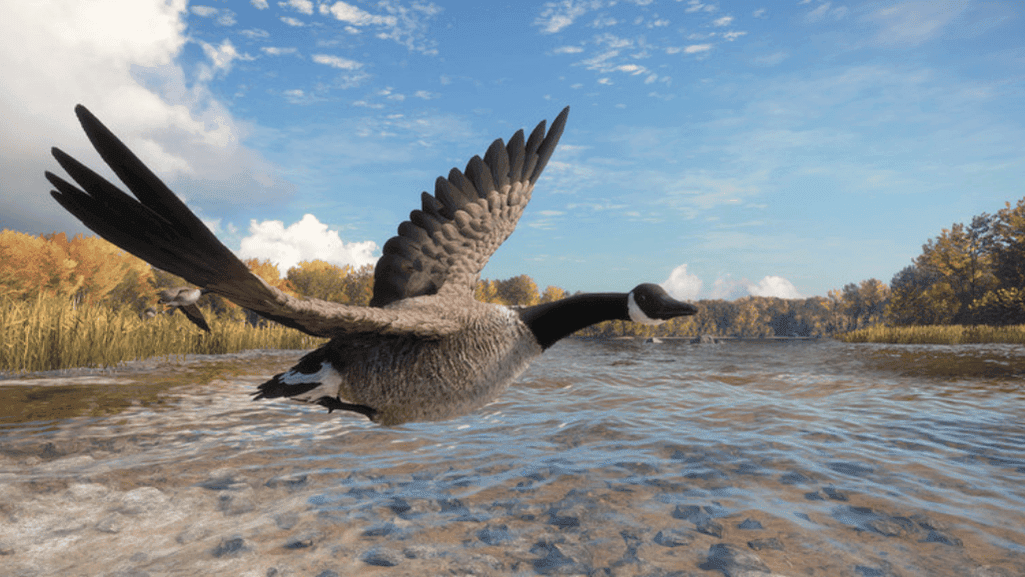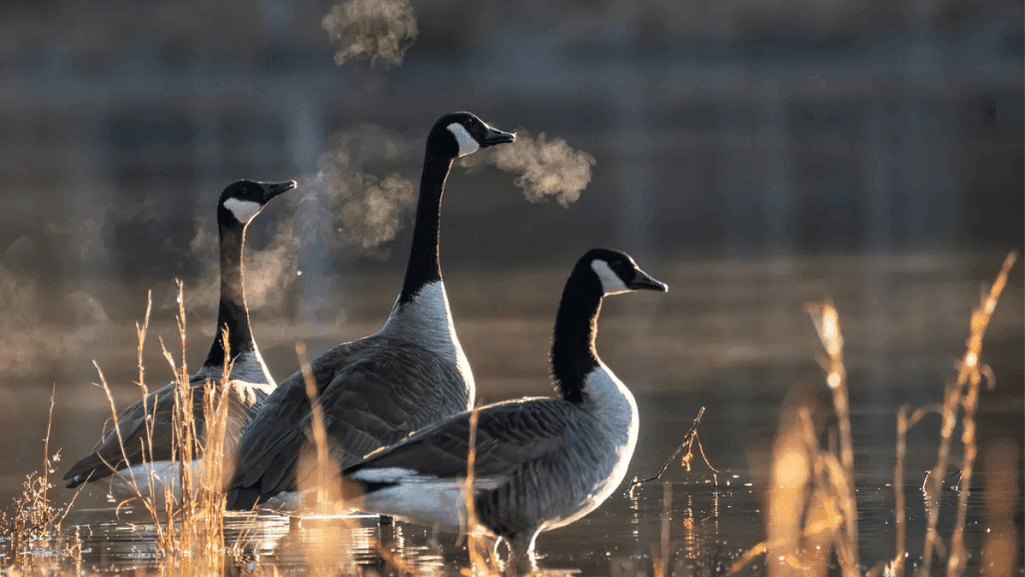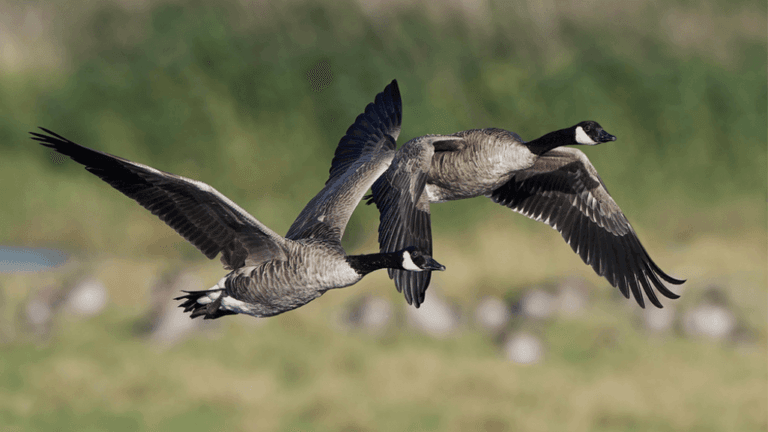For those eager to improve at hunting Canada geese, mastering the art of calling is essential. Whether you’re new or experienced, learning to communicate with these birds can boost your hunting success. Start by practicing the basic cluck sound for 10 to 15 minutes each day.
As you get better, it’s important to mimic the actions of approaching geese. Working with a partner is key, as their feedback helps refine your skills. Watching how real geese react to your calls is also vital for adjusting your volume, tempo, and pitch. Experts use a variety of sounds to lure geese into the sky.
By following these tips, you’ll not only learn to mimic Canada goose calls but also gain confidence. This confidence is what attracts geese to your decoys. From the long-range hail call to the quick cluck strings, mastering these sounds can be a game-changer. The 2022-23 hunting season data shows that calling skills are closely linked to success in the United States.
Key Takeaways
- Begin by mastering the basic cluck sound for an effective foundation in Canada goose calling.
- Integrate real behavior of geese into your calling routine for a natural approach.
- Use partner feedback to improve your calling technique and build hunting camaraderie.
- Learn from actual geese to adjust your calls effectively in live hunting scenarios.
- Understand that expertise in calling enhances your confidence and success in attracting Canada geese.
Understanding Canada Geese Behavior
Canada geese behaviors and sounds are key for wildlife and hunting fans. Their Canada geese sounds are vital for social interactions and mating. These sounds tell important messages to other geese and to those who listen.
Male and female Canada geese have different calls. Males have a deeper, longer call, while females respond with quicker, higher calls. During mating, they make calls together for up to 45 seconds, focusing on each other.
The type of call and body language are both important. For example, during fights, males honk loudly and show aggressive postures. In courtship, they call together and face each other, without aggression.
Social Structures of Canada Geese
- Canada geese have different sounds based on their social status. Dominant geese are more vocal.
- These sounds help keep the flock’s structure and can scare off predators or rivals.
Importance of Vocalizations
Every sound Canada geese make has a purpose. It depends on the bird’s age, the season, and its social situation. Knowing these sounds can improve wildlife observation and hunting.
Seasonal Patterns in Calling
In spring, geese are very vocal as they find mates and defend nests. Knowing when they call can help with wildlife management and hunting.
The sounds and behaviors of Canada geese create a complex language. By understanding this language, we can learn more about these birds and their environment.
Essential Tools for Effective Calling
For those dedicated to mastering the art of luring waterfowl, understanding and selecting the best Canada goose calls is key. Just as a musician selects their instrument, so too must the hunter choose their calling gear with precision. This is to best mimic the complex language of Canada geese.
Types of Canada Goose Calls
The choice of goose calls can be overwhelming. But, the most popular among seasoned hunters is the short-reed call. It’s versatile, producing a range of sounds from deep tones to sharp pitches. This makes it a favorite for its adaptability in different calling scenarios.
Such adaptability makes it suitable for both beginners and experts. It helps them move from basic long-range calls to more complex sequences like comeback or feeding calls.
Recommended Brands and Products
- Zink Calls: Known for their innovative designs in goose calling gear, Zink offers a variety of calls for both newcomers and calling veterans.
- Buck Gardner: This brand is known for its reliability and quality. It offers calls that produce authentic goose sounds essential for successful hunting.
- Primos Hunting: Primos provides a selection of calls that are easy to use and expertly crafted for various hunting situations.
In addition to these brands, hunters should seek gear that matches their skill level and the specific needs of the environments they hunt in.
Maintenance for Calling Gear
To ensure that their calls last season after season and always sound clear, hunters must maintain their calling gear meticulously. Regular cleaning, proper storage, and handling can significantly enhance the lifespan and effectiveness of goose calls. Adjusting hand position and airflow, as suggested by experts like Steve Bierle, also plays a critical role in maintaining the quality of sound produced by calls.
Adopting a rigorous maintenance schedule, coupled with continuous practice, can turn even a novice into an adept caller. As one’s skills improve, upgrading or adapting one’s gear to include diverse types of calls can help keep the challenging pursuit of goose hunting fresh and rewarding. Remember, the success of a hunt often lies in the fine details of how well you speak the language of the geese.
Basic Canada Goose Calls and Their Uses
Learning how to call Canada geese starts with basic calls. These calls are key for both new and seasoned hunters. They help connect with these birds.
The Honk
The honk is the most basic goose calling sound. It’s used to gather geese from far and near. A deep growl followed by a sharp break is the honk’s sound.
It’s vital for catching the attention of geese flying by. Try changing the pitch and loudness to sound more like a real goose.
The Mating Call
The mating call, or “Triumph” call, is key in spring. It’s a loud call by the gander to show readiness and territory. It’s hard to master but makes hunting in spring much better.
Alarm Calls
Geese don’t use specific calls for alarm. Instead, they use body language like raising their heads. This means they’re alert or upset.
Knowing these signals helps hunters stay quiet and avoid scaring the geese.
Practicing these calls is essential. For more tips, check out how to call Canada geese. Experienced hunters share their knowledge there.
Start with the honk and then move to more complex calls. The goal is to make sounds that match how geese naturally communicate.
Advanced Calling Techniques for Experienced Hunters
For those who love waterfowl hunting, learning advanced Canadian geese calling techniques can turn it into an art. This part explores the complex strategies used by expert hunters. They aim to improve their calling and get better results in the field.
Mimicking Natural Sounds
To attract Canadian geese, mimicking their sounds is key. A good goose calling sequence includes different calls, like feeding clucks and distress calls. Each call is used based on the geese’s surroundings. By learning these sounds, hunters can make them sound real, drawing the geese in.
Combination Calls
- Combining different calls to simulate a flock: Using tools like the Saunders Traffic or Zink Little Man, experienced callers can layer sounds to mimic a group of geese communicating among themselves.
- Varying pitch and tone: Adjusting the reed or even expert techniques such as reed shaving can modify the pitch, enabling the caller to represent various age groups and sizes within a flock.
- Adapting to real-time responses: By listening and reacting to the geese’s own calls, hunters can alter their sequences dynamically, making the interaction more natural and convincing.
Timing and Rhythm in Calling
The rhythm and pacing of goose calls are critical. Calls need to be sequenced like natural goose interactions, avoiding unnatural patterns. Using recordings like Scott Threinen’s “Bad Grammar” DVD can help learn the right rhythms and timings.
To master Canadian geese calling techniques, practice is key, even before the hunting season. This practice allows for call adjustments, ensuring each sequence is delivered with confidence. Whether you’re new or experienced, adding these advanced strategies to your routine will improve your waterfowl hunting.
Weather and Its Impact on Calling Success
When hunting Canada geese, knowing how weather affects them is key. It changes their behavior and how well your calls work. Mastering these changes is vital for a good hunt.
How Wind Affects Sound Projection
The wind plays a big role in how far your calls go. Windy days can carry your calls far, but it’s not always good. Strong winds can distort your calls, making them less effective.
On the other hand, a light breeze helps your calls travel naturally. This makes them sound more real, improving your chances of attracting geese.
Best Conditions for Calling
The best times to call are when geese are most active. Early mornings with a bit of moisture in the air are perfect. The wind direction and speed also matter.
Knowing these conditions can make a big difference. It can help you attract geese or let them pass by. Click here to learn more about weather’s impact on birds.
Seasonal Considerations
Each season brings its own challenges and chances for hunting Canada geese. Spring and fall are the best times, but the weather can change a lot. Knowing these changes helps you plan better.
In late autumn and winter, geese are hungrier. They might be more likely to respond to your calls. Just remember to consider the cold and wind.
Understanding how weather affects geese and your calls is critical. Adapting to the weather and planning can turn goose calling into a strategic hunt. It’s not just luck anymore.
Locations for Optimal Canada Goose Calling
Choosing the right spot is key when learning how to call Canada geese. A good location offers clear views, easy access, and little disturbance. This makes it perfect for calling geese. We’ll explore how to pick the best spot, following expert goose calling tips.
Identifying Prime Spotting Areas
Look for areas where Canada geese often fly and land. Places near water with clear skies and less people are best. Knowing when and where geese eat and rest helps you plan your calls better.
Setting Up Your Calling Station
Setting up your calling spot is important. Find a place with lots of foliage to hide. Blinds or camouflage can help you stay hidden. Being downwind and near decoys can also help attract geese.
Importance of Concealment
Being hidden is essential for how to call Canada geese well. Even the best calls won’t work if geese see you. Use the land and plants around you to stay hidden. Move quietly and avoid making loud noises.
With the right location, setup, and hiding, calling geese can be more fun. It lets you practice this sport with more confidence. Remember, the right spot is as important as the right call.
Tips for Successful Canada Goose Calling
Mastering Canada goose calling needs practice, technique, and observation. Sound travels well over water, which affects your calling. It’s important to adjust your call’s volume.
A loud call might scare geese, while a soft one might not get their attention. In public areas, a bold call can work well. But, a gentle call is better when you’re alone.
Practicing Your Technique
For great goose calling, mix up your notes and tempo. This attracts cautious birds. In busy areas, loud calls work. But, soft calls are better when you’re alone.
Getting the rhythm of your calls right is key. It makes your call sound like a real flock. Also, picking the best canada goose calls for your skill level is important.
Learning from Experience
Learn from waterfowl behavior, like body language. Location is more important than sound or volume. Knowing the right tempo and pitch helps a lot.
Goose numbers have changed a lot. This shows the need for sustainable hunting and rules. Weather, like wind direction, also affects your calling.
Recommendations from Expert Callers
Field Hudnall, an expert, says focus on mastering a call. Knowing what not to do is just as important. Stick to the basics, like the honk or cluck.
Practice in different conditions to sound authentic. Calls with changing pitch or seeming to come from many geese work well. This boosts your hunting success.


